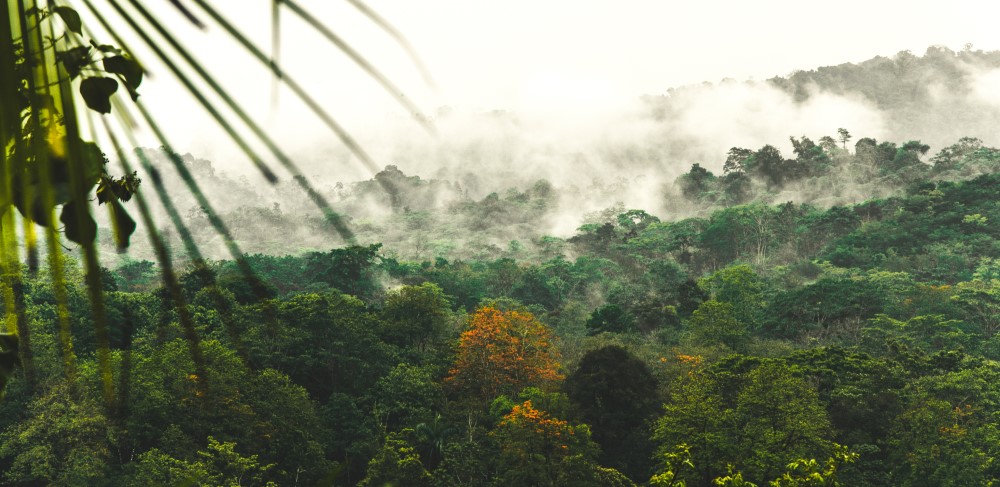Long-listed in the Explorers Against Extinction “Stories For Survival” Competition in 2021, Cherie Magnus tells of her trip to see the Monarch butterflies in Mexico.
Long before we see a glint of their orange wings, we hear them, hundreds of millions of them. What appear to be acres of trees in brilliant autumn foliage is instead the multitudes of butterflies roosting so thickly as to entirely hide the trees. Because it is warm and sunny at that moment, they are beginning to stir and fly and fill the air, thousands mating as they are mysteriously drawn here to do every year.
It was a cold and wet February in San Miguel de Allende, Mexico, but the sidewalk sign under the arcade had announced MARIPOSAS! BUTTERFLIES! Curiosity made me climb the stairs to Tours Mexico Colonial to inquire, “What’s with the sign about butterflies? It’s the middle of winter. What butterflies?” As a fledgling expatriate in Mexico, I was curious about everything.
“That’s why we have the Monarch Butterfly Tour—to see them in their winter home before their migration back north,” Jaime the tour owner explained. “We can only visit from November to March.”
I had heard about the Monarchs resting in a particular tree the same time every year in Monterey, Northern California, on their way to Mexico, but even though I was from Los Angeles, I had never seen the famous phenomenon. “Sign me up,” I said.
That night a huge storm hit San Miguel and the neighboring highlands, the worst in many years. Streets flooded and the temperature dropped to below freezing.
When a few days later the morning dawned cold but bright, Jaime, a couple from Canada, and I set off on the three-hour drive to Michoacan and the butterfly sanctuary at 10,400 feet. As we climb up the Sierra Cinqua mountains, we pass through the old silver mining town of Angangeo, hung copiously with festive flags of laundry, since today is the first dry day in a long time.
No one really knows exactly why the Monarchs come to this part of the world every year to hibernate, but some people think that the butterflies are drawn to Sierra Cinqua because of programmed insect genetics. Others believe they are attracted by the magnetism of the minerals still in the earth, even after centuries of mining.
At last we arrive at the El Rosario Sanctuary, owned by indigenous groups with the mandate to protect and preserve. The biggest problem facing the conservation of the winter home of the Monarchs here in Mexico is the prevention of clandestine logging and deforestation. Felled trees are today’s money for family food; butterfly conservation is tomorrow’s lofty aspiration.
Jaime pays to park in what I suppose is a parking lot, but today it is just our one car in a field of mud after the torrential storms. As we get out and look around, a posse of horses and riders crests the hill—for rent in case we don’t feel up to the long trek to the Monarchs’ sanctuary way up in the pines.
Nevertheless we set off on foot with our guide, Maria Elena Mondragon Chavez, a tiny indigenous woman of 68, who leads us up the hill, through the piney woods, and over the snow for hours. A guide is necessary because the butterflies’ refuge changes according to the sun and winds, and it takes a specialist to find them. The insects have their favorite trees and foods (milkweed) and are carried from area to area in the forests by warm thermals. Guides insure that visitors don’t damage either the insects or any part of their haven.
The storm three days ago had wreaked havoc on the sanctuary—freezing cold and tree limbs breaking under the weight of heavy snow–and millions of Monarchs lie dead in the snow at our feet, creating a frozen carpet of orange and black. I see the butterflies everywhere, surrounding me below and above and filling the sky, and the world is a magical orange and black of movement. They light on us, on our faces, soft as whispers, cover our hair and gentle our breathing. Engulfed in swirling emotions and butterflies, I feel a wave of intense mutual love and connection to the infinite.
Our silence and awe and the quiet sound of millions and millions of wings beating turns the forest into a church, a holy mystic place of wonder, with tiny living fragments of stained glass knowing something that we don’t. Here is a wonder no one really understands, a mystery taking place each year for millennia that even scientists can’t figure out.
In another couple of months, the Monarchs will begin their annual 3,000 mile return flight north to their summer homes in Canada and the United States. For now they hang like clusters of Spanish moss from the fir trees high up in the mountains of Mexico, and then, when warmed by the sun, mate in the snow. As the males die, the females lay their eggs in the milkweed that sustains the Monarchs. Soon the caterpillars hatch to begin the cycle again with the flight north.
The ancient peoples of Mexico believe that each Monarch butterfly is the soul of a dead child. The butterfly is a Christian symbol for the Resurrection. There’s no doubt that their yearly 6,000 mile roundtrip migration to the same forests in highest Mexico is a mystery—and a miracle.
The vaqueros with the horses again appear through the trees as we, drained and weary, begin our descent. Jaime hikes down on foot with Maria Elena, but the Canadians and I mount our horses and set off through the snow, surrounded and serenaded by beating wings.

